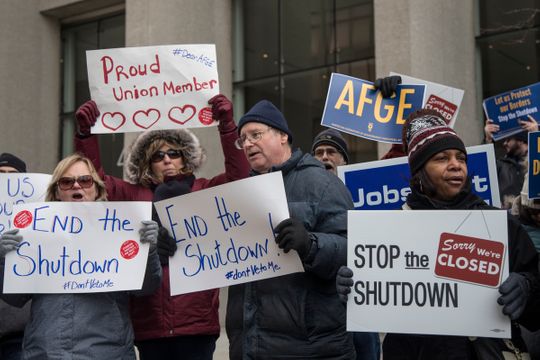Outside the School #5: Government shutdown, measles, and more

More stories from Reena Mathews

Government shutdown
Today, the federal government’s now infamous shutdown hit the benchmark of the 22nd day, making it the longest of its kind. As such, yesterday, 800,000 federal workers were left unpaid for the first payday of the shutdown.
The cause of hundreds of thousands of Americans working without pay is because of the infamous battle between President Trump and his opposers over the issue of a southern border wall.
Earlier in December, Democrats had already approved $1.6 billion in the name of border security, but Trump still wanted $5.6 billion for the wall specifically, despite the large opposition. On Dec 11, Trump and Pence met with the minority leaders of the U.S. Senate and House, but discussions of the wall still met no conclusion.
On Dec 19, the Senate approved a continuing resolution in preparation for the impending shutdown, ensuring that parts of the government would remain funded in that event and not allocating any extra money to border security and the wall.
The next day, Speaker of the House Paul Ryan announced that Trump was ready to sign; within hours, Trump reversed this position. Thus, two days later, the partial shutdown commenced.
In the following week, discussions of compromise and the wall being a “metaphor for border security” flew around incessantly. There was talk of giving only $2.5 billion for the wall, but this was promptly shut down by Trump.
While at the beginning of the year, Democrats officially took control of the House because of the midterms, Congress still needs to draw up a veto-proof majority, and Trump is not budging. In fact, he said during a closed-door meeting— and fully admitted to saying later on— that he is willing to let the shutdown prolong for months and even years, though he believes it won’t persist longer than a year.
As such, for the time being, 800,000 federal workers are going without pay, 420,000 of which are required to continue working because they are “essential employees.” National parks are collecting litter, public museums are closed, state department services have been minimized, the IRS has been reduced, and more.
Former felons in Florida receive the right to vote
States across the country have various standards for felons when it comes to voting, from receiving the right after carrying out their prison sentence, to after parole. Florida, however, had always lifted that right for ex-felons. They did have the option to apply for re-enfranchisement from the governor and cabinet members, but the process was complicated, and the governor had power to veto any requests.
But, in the midterm elections, almost 65% of voters voted in favor of an amendment that would restore voting rights to ex-felons. This was enacted officially last week and returned voting rights to all ex-felons who had completed all parts of their sentencing like prison time, parole, fines, etc. Though the amendment does not include felons of murder or sex crimes, 1.4 million Floridians are affected by the change.
The newly sworn-in governor, Ron DeSantis, has already addressed the amendment, stating that it needs “guidance” from legislation in the form of a bill that contains “implementing language.” Opposers believe that the amendment needs no interference from legislators, as the amendment was written to act on its own.
Regardless of if lawmakers go forth with a bill of some sort, they will only be convening for the next legislative session in March, and the amendment has still gone into effect, marking a possible shift in voting trends as new registrations stream into a swing state and the 2020 election approaches.
The measles is back
Nineteen years ago, the measles was officially declared eliminated from the United States.
Yet, New York is now facing the largest breakout of measles in recent years. Approximately 160 cases have been reported across the state, and New York is still bracing itself for the outbreak to grow. The root is believed to be from visits to Israel, where they are having their own outbreak, but the rapid spread is a result of unvaccinated children.
Transmitted through sneezing, coughing, and direct contact, measles is one of the most contagious viruses; it is said that 90% of people will catch it if in the same room as someone with measles. Those with the virus remain contagious within four days before and after having it.
Health officials are working to ensure those who haven’t already are receiving the vaccination. 13,000 have been vaccinated in recent months, and tens of thousands of vaccination kits have been delivered to most-affected areas. Schools and daycare centers in highly affected areas have been closed, and unvaccinated children have been forced to stay home for theirs and others’ protection.
Despite the harmless, effective, and readily-available vaccination, dubious and disputable disbelief in the safety of the inoculation has destroyed medical progress and ushered in a highly contagious and dangerous virus.

Reena Mathews is now entering her third year on The Central Trend and second year as Editor in Chief. She has always loved to read and write and is...


























































































